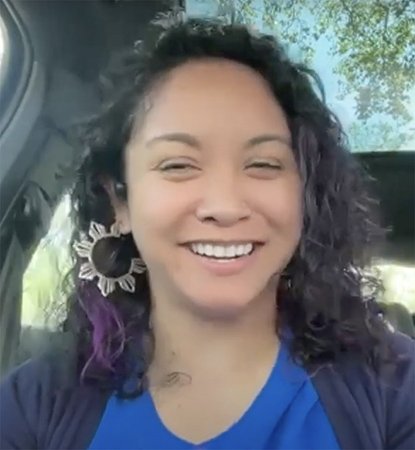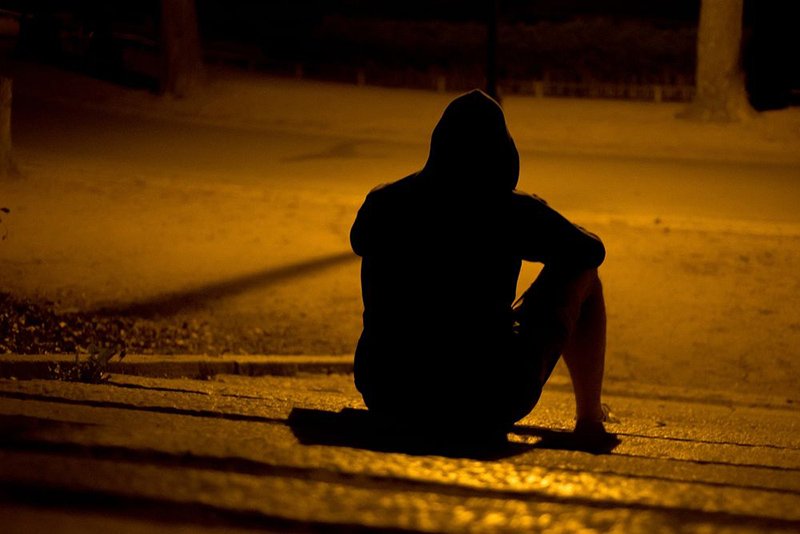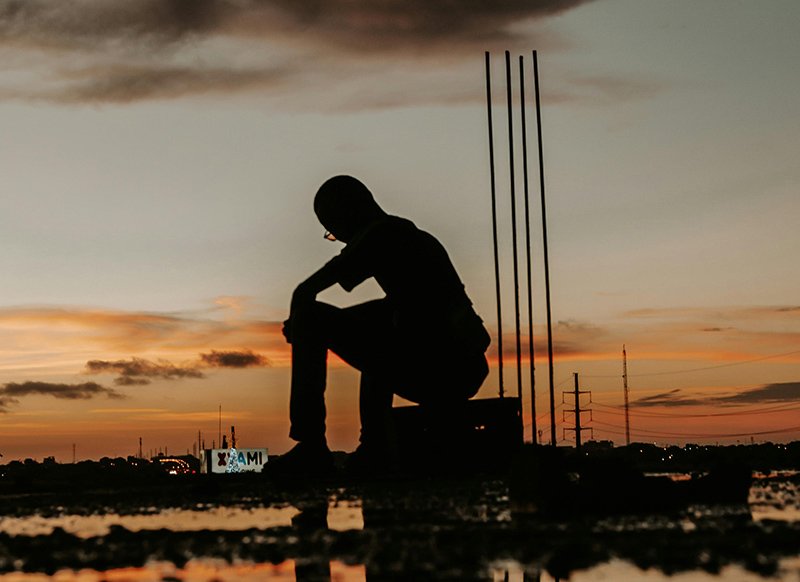FilAm Youth Overcoming Adversity
This resource is supported in whole or in part by funding provided by the State of California, administered by the California State Library in partnership with the California Department of Social Services and the California Commission on Asian and Pacific Islander American Affairs as part of the Stop the Hate program. Positively Filipino is a grantee for one year during which we will be posting stories that support this campaign. To report a hate incident or hate crime and get support, go to CA vs Hate.
Funding provided by the State of California.

Gail Kong: Why has San Mateo County focused on the challenges faced by transitional-age Filipino youth (i.e., between the ages of 13 and 24)?
Dr. Hazel Benigno, Clinical Psychologist: Filipino youth have one of the highest high school dropout rates in the U.S. and 45.6% of Filipina American adolescents have experienced suicidal ideation (thoughts), the highest rate among all racial and ethnic groups, according to Kapwa Kultural Center (KKC) Senior Director Stephanie Balon, LMFT, citing the Centers for Disease Control. Research shows that Filipino youth have a high rate of low self-esteem and that health risk behaviors increase with each generation, impacting their performance in school and quality of life. Young people need jobs, skills, support, and emotional and physical safety to succeed.

Opening of the Kapwa Kultural Center (KKC) with Daly CIty Mayor Juslyn Manalo and the KKC Leadership Team (Source: Kapwa Kultural Center Facebook page)
Highly regarded psychologists Dr. E.J. David and Dr. Kevin Nadal report a strong correlation between cultural identity formation and mental health and wellness of Filipino adolescent youth. KKC responded to these facts by developing a holistic, culturally affirming, integrative approach for Filipino youth.
Are there ways in which the experiences of grandparents and parents as immigrants, e.g., colonization and martial law, also impact Filipino youth?

Dr. Hazel Benigno
HB: Intergenerational trauma is common, and Filipino Americans are no exception. One of the factors with deep historical and cultural significance is colonial mentality, which has persisted in the Filipino diaspora despite the Philippines obtaining independence in 1946. With a colonial mentality, i.e., preference for anything American over anything Filipino, people want to feel the need to be Americanized while also wanting to hold on to certain aspects of Filipino culture, resulting in internal conflicts and a sense of not fully belonging to either culture.
Our elders took on many adaptations to cope with challenging experiences, shaping values and beliefs; those beliefs might be passed down even though the circumstances have passed. The unique vulnerabilities of FilAm youth are rooted in the intergenerational effects of history and the complexities of cultural identity. Future generations must critically and lovingly evaluate which inherited beliefs and behaviors continue to serve them, to foster a more balanced and resilient cultural identity.
Are there coping mechanisms that FilAm youth can draw upon, ones that draw upon their heritage and culture?
HB: Many of the coping mechanisms effective for Filipinos of all ages draw upon their heritage and culture, even if they don’t realize it. These practices provide emotional support and foster a deeper connection to cultural identity.
One effective coping mechanism is being in community with those who seek similar connections and share similar values, while being able to enrich each other’s worldview. Part of the reason kapwa (shared identity and interconnectedness) is such an engrained cultural value is because it speaks to the human need for social connection and provides a sense of belonging to something bigger than oneself, emphasizing the importance of mutual support.
Art and creative practices are also powerful coping mechanisms, because they provide a therapeutic way to make meaning of challenges. Focusing on the process, rather than the end product, allows for self-expression, emotional regulation, and working through thoughts and feelings, making creativity accessible to anyone, regardless of that person’s perceived artistic abilities.
Additionally, understanding cultural values through a decolonized lens and bringing them forward within our current context can be particularly beneficial. For example, hiya (shame and propriety) can be (re)interpreted as a reminder to consider our impact on others, which is a powerful reminder of who and whose we are. We shift hiya from a tool of oppression to a value that promotes humility and alignment with personal and collective values.
Critically and lovingly questioning aspects of our culture that need to be contextualized allows FilAm youth to honor their cultural strengths while adapting them to their current realities. This process can foster a deeper understanding and appreciation of their heritage.

(Source: Rawpixel)
Are these coping mechanisms tools that are useful responses to anti-Asian hate?
HB: The same coping mechanisms that draw upon our cultural strengths can also be used to process and respond to anti-Asian hate. Being in community directly counters the isolation, guilt, and self-blame that victims of hate crimes often feel. Sharing a safe space with supportive others promotes both emotional and physical safety, which is often undermined. Working through trauma with community reminds us that healing happens in relationships.
Creative practices also help victims make meaning of and work through the trauma. Sharing one’s creative work with trusted others and feeling seen can provide validation and support.
How does the Kapwa Kultural Center apply this knowledge to help transitional age youth?
One example is KKC’s Mental Health First Aid courses that teach people how to identify, understand, and respond to signs and symptoms of a mental health or substance use challenge in others. Participants recognize common signs and symptoms, how to interact with a person in crisis, how to connect a person with help, and how to use self-care tools and techniques.
KKC has also held two youth conferences to build skills and knowledge in five areas: Kaalaman (rites of passage), Ginhawa (as wellness ambassadors), Pamuno (leadership), Yaman (financial wellness/ literacy), and Pamana (entrepreneurship). Youth develop self-awareness, empowerment, and a sense of belonging. Recently we opened the Kapwa Kultural Center a space where young adults learn essential life skills and wellness and cultural affirmation.
Please tell us about one young person.
HB: We first met “Joseph” (a combination of several participants) as a 17-year-old. He is part of the 1.5 generation, meaning he immigrated with his mother and father from the Philippines when he was four years old. Both parents worked long hours and sometimes two jobs each, doing their best as parents but often experiencing a disconnect because of being a bicultural family. Meanwhile, Joseph’s teachers couldn’t relate to him culturally and there weren’t caring adults in his life who understood his experiences.
Joseph began attending our monthly general meetings then started attending other events which are culturally relevant and rooted in our values of kapwa and ginhawa (holistic well-being), while building coping skills. For example, our yearly parol (Christmas lantern)-making workshops encourage creativity and cultural connection.
In Joseph’s case, non-therapy activities made him more comfortable later to seek formal therapy. In the six years we’ve known him, he went from attending general meetings to events, volunteering, and helping lead some events. His leadership skills translated to how he engaged in his education and career. At the same time, he became more comfortable with talking about his mental health and the needs in the Filipino American community. His decision to start therapy was monumental because of the stigma attached to seeking mental health care, especially for men in our community. Now he can talk to someone who can understand and affirm him culturally, expressing his feelings and processing what it means to be a Filipino American man. There are many pathways to wellness and KKC helped Joseph explore multiple avenues.

(Source: Pexel)
In your 15 years of practice (from social services, to therapy, and as a Licensed Clinical Psychologist) have you seen a shortage of Filipinos who choose this field?
HB: I have welcomed the increase in the number of Filipino people; however, Filipino Americans still make up a relatively small percentage of mental health professionals. As of 2018, the American Psychological Association reported Asian Americans are 4% of the country’s psychology workforce despite being 6% of the general US population.
Filipino Americans in the Helping Professions
The various pathways and roles within the industry, multiple entry points, and career options can all be both liberating and overwhelming.
In California, graduate programs include a master’s degree to become a Marriage and Family Therapist, Social Worker, or Professional Clinical Counselor, or a doctorate (PhD or PsyD) to become a Clinical Psychologist. There are even more non-degree pathways to working within the healing professions. The type of work and the type of clients can also vary widely, from working with individuals, groups, families, and/or systems and organizations, within diverse settings.
Family and societal pressures often push people towards more familiar professions, and the mental health field is still not as widely understood or valued even though many of us have a clear purpose of helping others. Cost, time, and resources are also factors. While mental health services are increasingly valued, more support for to enter this field is needed.
“Being in community directly counters the isolation, guilt, and self-blame that victims of hate crimes often feel.”
Why did you choose your profession and what was your educational path?
HB: My two bachelor’s degrees in Psychology and Philippine Studies at the University of San Francisco allowed me to explore my cultural heritage laying the foundation for a career in psychology. I then obtained a master’s degree and a doctorate (PsyD) in Clinical Psychology, both from the California School of Professional Psychology at Alliant International University.
Several key factors influenced my decision to pursue a PsyD and kept me moving forward along the way. First, I have a strong desire to serve strategically undervalued (or historically marginalized) communities, especially my own Filipina American community in the San Francisco Bay Area. I believed that a PsyD would provide me with the most options to serve these communities in various capacities, from direct clinical work to advocacy and consultation.
Second, I was motivated by the underrepresentation of Filipino Americans in higher education. According to the US Census, as of 2012, only 0.6% of the approximately 3 million Filipino Americans in the United States held a doctorate. I am committed to increasing representation, setting an example for future generations, and holding the door open for others who may follow.

No comments